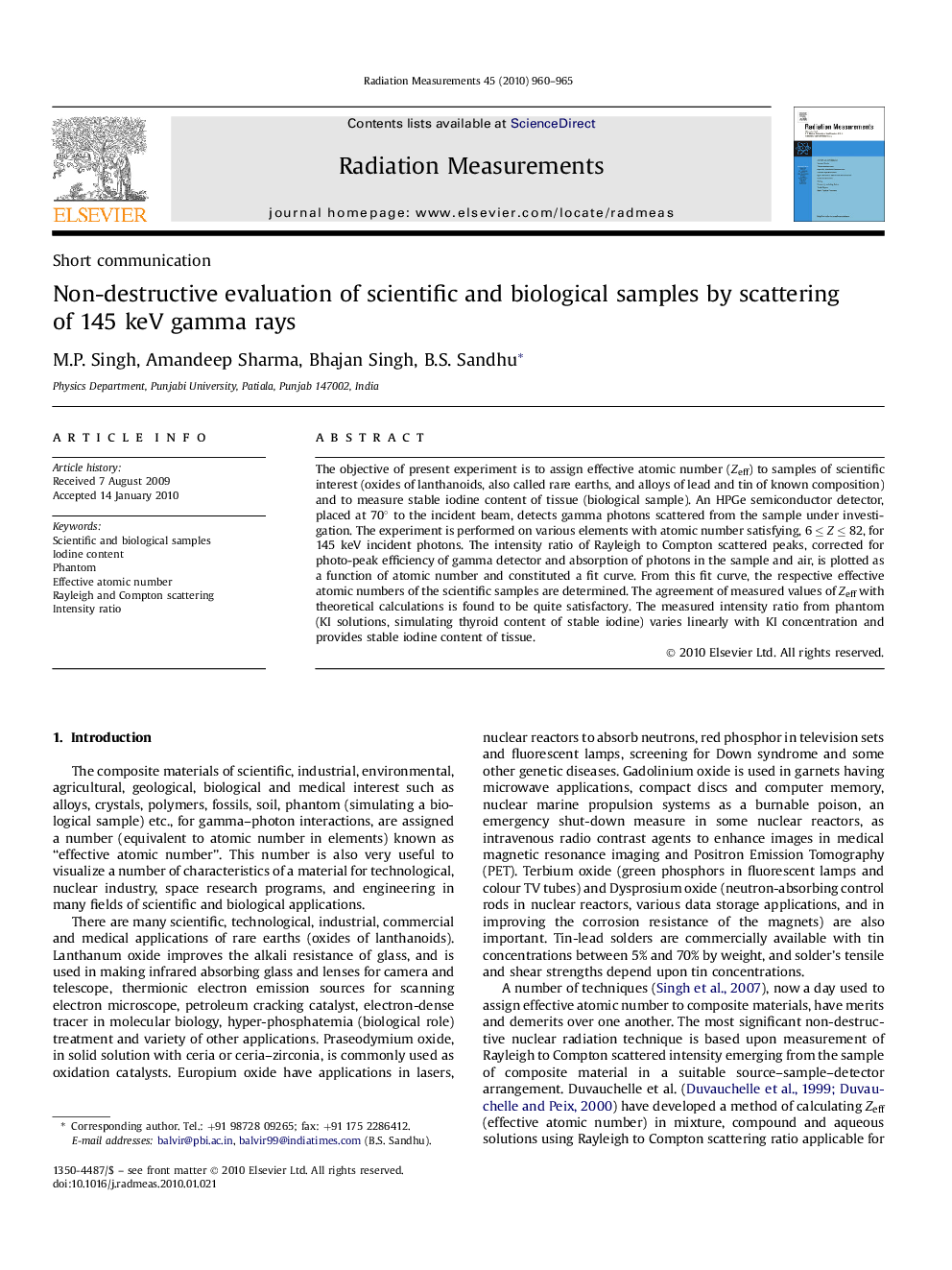| Article ID | Journal | Published Year | Pages | File Type |
|---|---|---|---|---|
| 1884472 | Radiation Measurements | 2010 | 6 Pages |
The objective of present experiment is to assign effective atomic number (Zeff) to samples of scientific interest (oxides of lanthanoids, also called rare earths, and alloys of lead and tin of known composition) and to measure stable iodine content of tissue (biological sample). An HPGe semiconductor detector, placed at 70° to the incident beam, detects gamma photons scattered from the sample under investigation. The experiment is performed on various elements with atomic number satisfying, 6 ≤ Z ≤ 82, for 145 keV incident photons. The intensity ratio of Rayleigh to Compton scattered peaks, corrected for photo-peak efficiency of gamma detector and absorption of photons in the sample and air, is plotted as a function of atomic number and constituted a fit curve. From this fit curve, the respective effective atomic numbers of the scientific samples are determined. The agreement of measured values of Zeff with theoretical calculations is found to be quite satisfactory. The measured intensity ratio from phantom (KI solutions, simulating thyroid content of stable iodine) varies linearly with KI concentration and provides stable iodine content of tissue.
